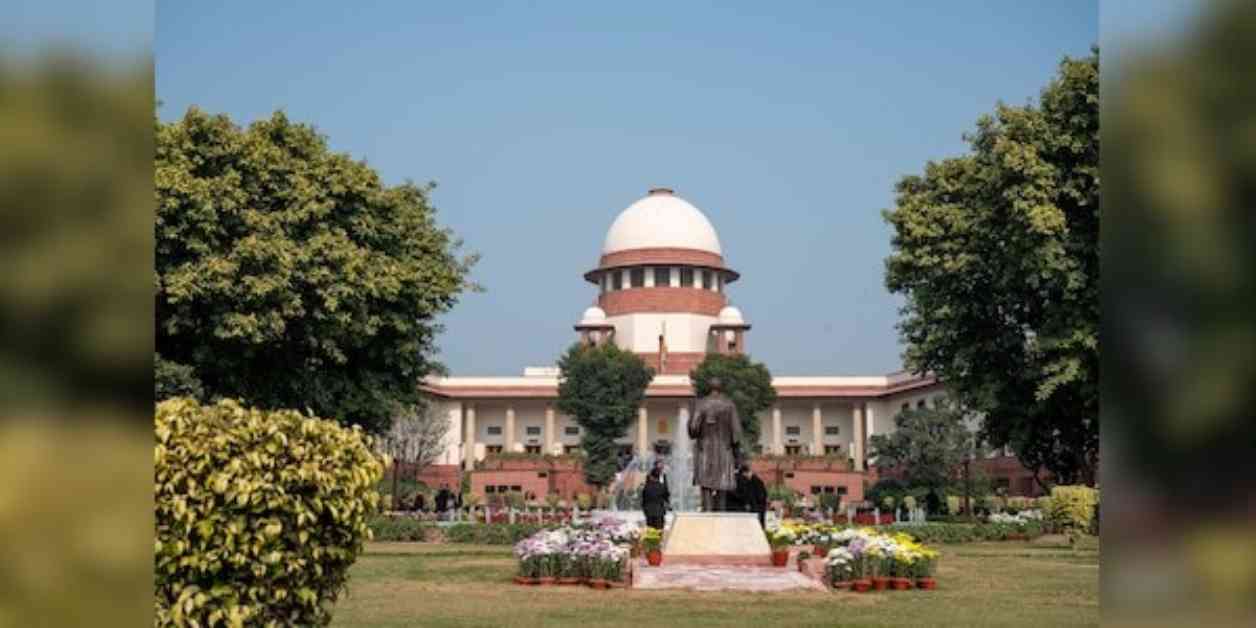The Supreme Court has issued a directive to several states and Union Territories (UTs) to provide comprehensive information on the functioning of open prisons within a four-week timeframe. This move aims to gather data and insights into the operation of semi-open or open prisons, where convicts are allowed to work outside the premises during the day to earn a livelihood and return in the evening. The concept of open prisons was introduced to help assimilate convicts back into society and reduce the psychological pressure they face when trying to lead normal lives outside of traditional prison walls.
Senior advocate K Parameshwar, who is assisting the top court as an amicus curiae in a matter related to congestion in jails, informed the bench of Justices B R Gavai and K V Viswanathan that several states and UTs have yet to submit their responses regarding open prisons. The states and UTs in question include Delhi, Himachal Pradesh, Madhya Pradesh, and Punjab, which have not provided the qualitative/quantitative charts requested despite a questionnaire seeking information on the status and functioning of open correctional institutions within their jurisdiction.
The Supreme Court’s bench emphasized the importance of receiving complete responses from all states and UTs within the specified four-week period. Failure to comply with the directive may result in the chief secretary of the respective states/Union Territories being summoned before the court. The matter has been scheduled for further consideration after the four-week deadline.
The apex court highlighted its previous directive on July 15, which instructed the chief secretaries of various states and UTs to submit their responses regarding open jails. However, states and UTs such as Gujarat, Haryana, Jammu and Kashmir, Maharashtra, Manipur, Nagaland, Telangana, Uttar Pradesh, Dadra and Nagar Haveli, Daman and Diu, Lakshadweep, Puducherry, and Ladakh have yet to file their responses.
During a hearing on May 9, the Supreme Court recognized that establishing open jails could be a solution to overcrowding in prisons and aid in the rehabilitation of prisoners. In a subsequent order on May 17, the bench acknowledged the preparation of a model draft manual by the Union of India, which referred to such facilities as ‘open correctional institutions’.
Subheadings:
Importance of Open Prisons in Criminal Rehabilitation Challenges and Benefits of Open Prisons The Need for Transparency and Accountability in Open Prison Systems
The Need for Transparency and Accountability in Open Prison Systems
Importance of Open Prisons in Criminal Rehabilitation
Open prisons play a crucial role in the rehabilitation of convicts by providing them with opportunities to reintegrate into society. By allowing inmates to work outside the prison premises and earn a livelihood, open prisons help in developing essential skills and fostering a sense of responsibility. The concept of open prisons aims to reduce recidivism rates and facilitate the successful reintegration of convicts into the community upon their release.
Challenges and Benefits of Open Prisons
While open prisons offer numerous benefits in terms of rehabilitation and reducing overcrowding in traditional jails, they also present certain challenges. One of the primary challenges faced by open prisons is ensuring the safety and security of both inmates and the general public. Proper supervision and monitoring are essential to prevent any potential risks or incidents that may arise from allowing convicts to work outside the prison boundaries.
On the other hand, the benefits of open prisons include providing convicts with a sense of autonomy and responsibility, which can positively impact their behavior and attitude towards societal norms. By allowing inmates to engage in meaningful work and interact with the community, open prisons offer a more humane approach to incarceration and emphasize the importance of rehabilitation over punitive measures.
The Need for Transparency and Accountability in Open Prison Systems
Transparency and accountability are essential aspects of ensuring the effective operation of open prisons. By mandating states and UTs to provide complete information on the functioning of open prisons, the Supreme Court is emphasizing the need for transparency in the criminal justice system. This transparency not only fosters public trust but also enables policymakers to make informed decisions regarding the management and improvement of open prison facilities.
Furthermore, accountability plays a crucial role in maintaining the integrity of open prisons and upholding the rights of inmates. States and UTs must ensure that open prisons adhere to established guidelines and regulations to safeguard the well-being of both inmates and the larger community. By holding responsible parties accountable for the operation of open prisons, the criminal justice system can work towards creating a more just and rehabilitative environment for convicts.
Conclusion:
The Supreme Court’s directive to states and Union Territories to provide complete information on open prisons signifies a step towards promoting transparency and accountability in the criminal justice system. By gathering data and insights into the functioning of open prisons, policymakers can make informed decisions to improve rehabilitation efforts and reduce overcrowding in traditional jails. It is crucial for states and UTs to comply with the court’s directive and ensure that open prisons operate in a manner that upholds the rights and well-being of all individuals involved. Through continued efforts to enhance the transparency and accountability of open prison systems, the criminal justice system can strive towards a more rehabilitative and humane approach to incarceration.




















